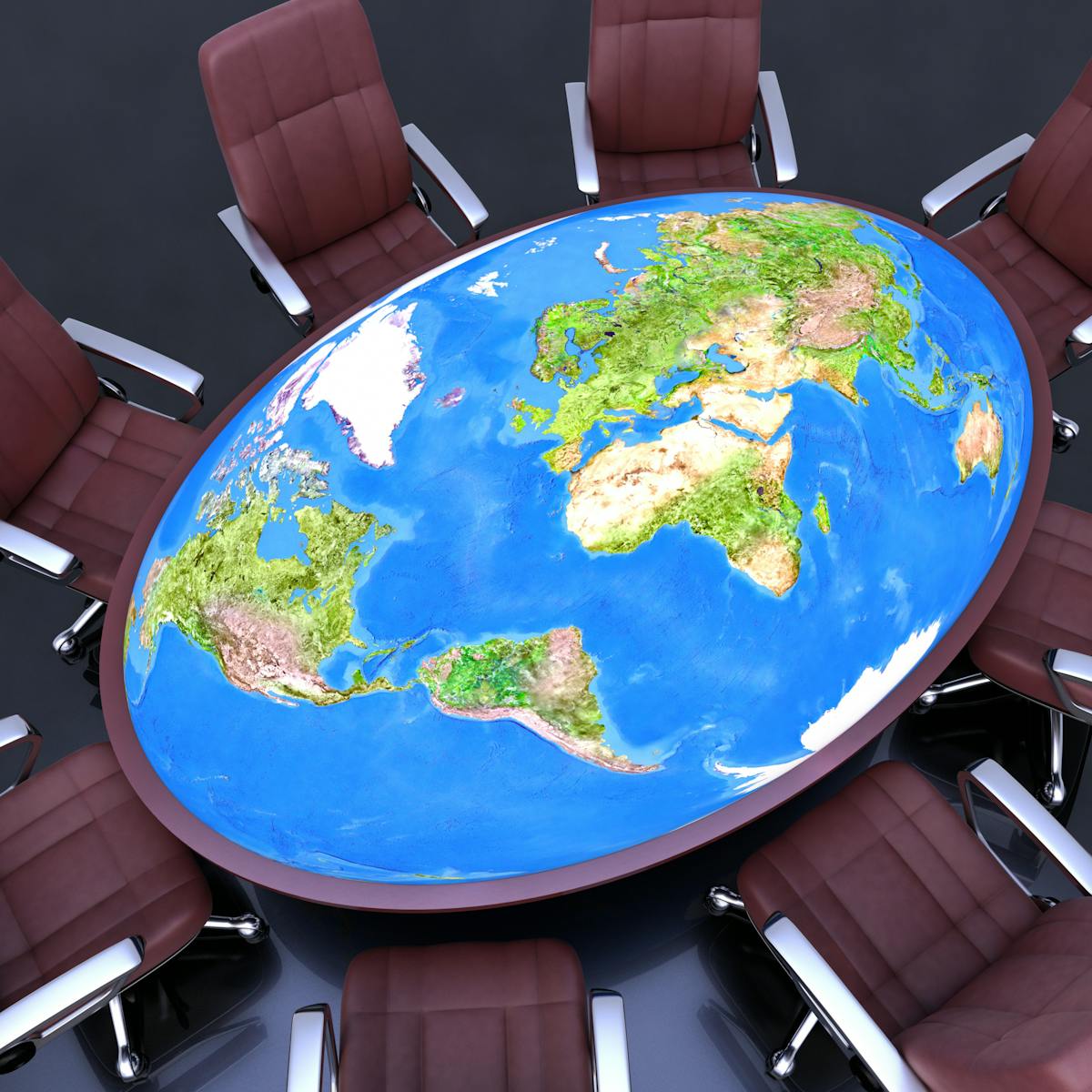The Failure to Reduce World Hunger is Closely Associated With the Increase in Conflict and Violence in the World. The World is Becoming More Polarized and Corrupt – and Does Anybody Care?
Following on from the posts under the heading of what shaped the world lets look at the state of the world as it is to day.
The world is becoming increasingly interconnected and interdependent, with ever more political, social, cultural, financial and commercial relations transgressing nation state borders but the convergence of issues facing the earth are now so interrelated that most of them cannot be fully understood out of context.
The recent pandemic served to prove our fragility and our interconnectedness.
When we start thinking about constructing a model of the world it’s better to say that while you are living in the world, it’s fairly difficult to judge it objectively or even understand all of its moving parts.
In addressing that issue I will note that many of today’s issues have legacies 100 years old and will not be addressed in this post.
If anything has brought us together over the last year and a half, it is our feeling of vulnerability about the present and uncertainty about the future.
Now urgent action, taken together, is needed to change course and reimagine our futures and this action must encompass an ethic of care, reciprocity, and solidarity.
But to translating and contextualizing these actions in a collective effort it requires a synopsis of the current state of the world.
It is only when the mess it is presented as a whole not news flashes that we have any concept of the state of the planet.
The whole structure of today’s world, much of it inherited from an earlier era, is up for serious discussion.
Thinking of the present state of the world its remarkable what can be achieved when leaders are prepared to lead.
To achieve the maximum benefits from the extraordinary possibilities that artificial intelligence (AI) and Robots will usher in tomorrow.
There are many factors behind what I call ‘the disillusioned society’ but greed and fear, two of the ancient enemies of human kind are the big drivers of Earth’s ecological and human systems which are now in severe crisis.
Climate change is a trend that affects all trends- economic trends, security trends. Everything will be impacted. And it becomes more dramatic with each passing year.
Our throwaway society, which in part drives markets and GDP, is continuing to damage the environment.
A key decision to changing our thinking and attitudes to polluting activities and endless growth is to dump Gross Domestic Product (GDP) as the universal measure of progress. It is a totally inadequate measure of societal progress.
That said here is an overview of the current state of the world.
Only 2.5% of the world’s water is fresh—the water on which the world’s terrestrial life depends. Around 70% of this fresh water is frozen in ice or permafrost. An estimated 4 billion people, nearly two-thirds of the world population, experience severe water scarcity during at least one month of the year.
Agriculture accounts for 70% of all freshwater withdrawals globally, a ratio that’s only going to increase – to an estimated 85% – as the population grows and agricultural production rises to meet it (by an estimated 50% before 2050).
About 43% of over 7,000 of the world’s languages are endangered. Just 23 languages are spoken by more than half of the world’s people, inhabiting upwards of 85% of the land surface of the globe.
In 2015, an estimated 2.1 billion people lacked access to safely managed drinking water services and 4.5 billion lacked access to safely managed sanitation services. Over 80% of all wastewater returns to the environment without being treated.
Population, pollution, greenhouse gases and deforestation are creating never before seen changes in Earth’s living systems—including a cultural and species extinction rate that is the highest in the planet’s history.
Higher concentrations of carbon dioxide, methane and other greenhouse gases, mainly as the result of human use of fossil fuels, have been determined to be the predominant cause of earth’s changing climate.
Sea levels are already rising by 2mm a year—faster than during the past 5,000 years.
Evidence is growing that the thermohaline circulation, driven by temperature and salinity, could be slowed or stopped by cold fresh water inputs to the Arctic and North Atlantic oceans.
Our oceans are full of plastics. Sea ice and glaciers are melting throughout the globe. More than 93% of the enhanced atmospheric heating since the 1970s has been absorbed by the ocean.
Over 90% of plastics produced are derived from virgin fossil feedstocks—about 6% of global oil consumption. This is equivalent to the total oil consumption of the global aviation sector.
Over 70,000 new chemicals have been brought into commercial production and released to the environment in the last 100 years.
An estimated 75% of the Earth’s land surface has been degraded through human activities, negatively impacting the well-being of at least 3.2 billion people, pushing the planet towards a sixth mass species extinction, and costing more than 10% of the annual global gross product in loss of biodiversity and ecosystem services.
The failure to reduce world hunger is closely associated with the increase in conflict and violence in several parts of the world. In addition, gains made in ending hunger and malnutrition are being eroded by climate variability and exposure to more complex, frequent and intense climate extremes. Approximately one third of the food produced in the world for human consumption—nearly 1.3 billion tonnes—gets lost or wasted every year.
In 2020, nearly 144 million children under 5 suffer from stunting (under height), 47.0 million children under 5 were wasted (underweight) , and of those, 14.3 million were considered severely wasted.
Industrialized civilization is still dependent upon cheap and reliable fossil fuel energy. There is a limited amount of fossil fuel. It is not “renewable” and there is no known way to make more.
The current humanitarian crisis in Ukraine may be in the spotlight right now however there are currently 27 ongoing conflicts.
A quarter of the entire global population lives in conflict-affected areas. 84 million people were forcibly displaced because of conflict, violence, and human rights violations. This year, it is estimated that at least 274 million people will need humanitarian assistance.
The cost of war is almost unfathomable.
Just imagine what the world could do with that money if conflicts were to end worldwide.
Conflict drives 80% of humanitarian needs and in 2016, the cost of conflict globally stood at an astonishing $14 trillion. That’s enough to end world hunger 42 times over.
Nearly 11 years after it started, the Syrian refugee crisis remains the largest displacement crisis worldwide (13.2 million, including 6.6 million refugees and more than 6 million internally displaced people). At least 2 million people are living in tented camps with limited access to basic services.
Lasting more than 60 years, the conflict in Myanmar (previously called Burma) remains the longest ongoing civil war in the world.
The recent takeover of Afghanistan by the Taliban after 20 years of US-led conflict more than half of the country’s estimated 40 million population face “extreme levels of hunger, and nearly 9 million of them are at risk of famine.
Wars are constantly in the news.
While we tend to hear more about refugees there are actually twice as many internally displaced persons around the world. In 2013, for instance, there were 16.7 million refugees and 33.3 million internally displaced persons. it’s easy to dismiss them and forget that we’re talking about individual people whose lives have been completely disrupted.
The World Bank and the IMF can pursue their loans in perpetuity, regardless of the loans having been given to dictators or incompetent borrowers, and regardless of whether the money actually benefited the poor.
The current depletion of biological diversity and, in particular, the prospect of severe depletion, if not virtual elimination of tropical forests, wetlands, estuaries and coral reefs that have been the “engines of biodiversity” for hundreds of millions of years, may have profound effects on the evolutionary processes that have previously fostered re-diversification.
Before 1961, the entire Earth satellite population was just over 50 objects. Since 1957, about 9,600 satellites have been launched and about 5500 are still in space—and 2300 of these are still functioning. The total mass of all space objects in Earth’s is more than 8800 tonnes. Earth’s orbit is now cluttered and dangerous with: ~34,000 objects bigger than 10 cm; ~ 900,000 objects from 1cm to 10 cm; and 128,000,000 objects from greater than 1 mm — 1 cm.
By the time you finish reading this paragraph, four acres of rainforests in Brazil (i.e. about three football fields) will be replaced with farmland, largely to grow cattle and animal feed.
The commercial exploitation, militarization and weaponization of space around the earth is ongoing.
Space Tourism is just getting started but the impact of bioengineering is what is going to have profound impacts on society in the near future.
The development of bioengineering issues in tandem with overlapping
technological areas such as artificial intelligence are what is going to shape
the world for the next generations, if climate change does bot wipe us of the
globe.
(Biotechnological discoveries are increasingly facilitated by automated and roboticides, private ‘cloud labs)
These issues will shape the future of bioengineering and must shape modern discussions about its political, societal and economic impact.
Technology is in the infancy of creating a world state.
Bioengineering is a discipline that applies engineering design and principles
to biological systems. Some examples of this fusion are artificial organs or
limbs, the genetic synthesis of new organisms, gene editing, the
computerized simulation of surgery, medical imaging technology and
tissue/organ regeneration.
Bioengineering brings with it both huge potential for good, and risks to
regulate. Like any other technology, bioengineering has damaging potential,
whether it be through misuse, weaponization or accidents. This risk can
create significant threats with large potential consequences to public health,
privacy or to environmental safety.
We need critical thinking to understand what they are, what their impact is and how they are related, with ethical and regulatory frameworks, climate change, inequalities, technological convergence and the misuse of technology, in order to drive informed policy decisions.

Comments
Post a Comment